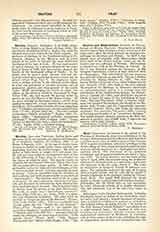

Great Falls, Diocese of (Greatormensis), created by Pope Pius X, May 18, 1904, comprises the following counties in the State of Montana: Carbon, Cascade, Chouteau, Custer, Dawson, Fergus, Park, Rosebud, Sweet Grass, Valley, and Yellowstone. It is in the eastern part of the State of Montana, U.S.A.; total area is 94,158 square miles.
The titular city, Great Falls, is most appropriately named, as the Missouri River at this point falls 533 feet in a series of cascades, giving an equivalent of 340,000 h. p., and thus ranking next to Niagara, both in scenic beauty and mechanical value. This cheap power is utilized by large manufacturing plants flour mills, plaster mills, iron works, smelting and reduction works, etc. The annual output of one smelter alone is over 100,000,000 pounds of copper, with large quantities of gold, silver, and lead as by products. Over 5,000,000 acres of rich farmland are tributary to the city; 1,000,000 acres being irrigated by the U.S. Reclamation Service and private enterprises. The region adjacent to the city is also rich in minerals copper, sapphires, gold, silver, lead, iron, gypsum, limestone, and bituminous coal (the output of this last for 1907 being 1,240,000 tons). Besides its importance as a manufacturing center, Great Falls ranks next to Butte as the most populous city in Montana, and is generally regarded as preeminently the home city of the Rocky Mountain region.
In the year 1850 Father De Smet, S.J., and his cornpanions were the first missionaries to celebrate the Holy Sacrifice of the Mass in the territory now covered by the Diocese of Great Falls. This notable event took place at Fort Benton, the head of navigation of the Missouri River, 2600 miles from its mouth, at its junction with the Mississippi. The Jesuit Fathers established missions to the Indians in Montana as early as 1841, and most of these missions are still in a flourishing condition. At St. Peter’s Mission, which is now the motherhouse of the Ursuline Order of Montana, 2732 baptisms of Indians were recorded in the Babtismal Register from 1855 to 1879. The early missionaries made many converts among the different tribes of Indians, and established among the white settlers a healthy Catholic influence the effects of which are still noticeable. The non-Catholics are respectful, and most generous in contributing towards the erection of churches and charitable institutions. The Catholics are well represented in different sections, in the social, commercial, and professional life of the community. The Very Rev. Mathias Clement Lenihan, vicar forane and missionary rector, of Marshalltown, Iowa, was appointed first Bishop of Great Falls, May 20, and consecrated September 21, 1904, at St. Raphael‘s Cathedral, Dubuque, Iowa. He was born October 6, 1854, at Dubuque, Iowa, U.S.A., was educated at St. Joseph‘s College, Dubuque, where he was a charter student, and at St. John’s College, Prairie du Chien, Wisconsin, conducted by the Brothers of the Christian Schools, and made his theological studies at the Grand Seminary, Montreal, Canada, where he was ordained priest December 21, 1879. Bishop Leni’ian was the first native of the State of Iowa to be raised to the priesthood. His first appointment was at Vail; his second, at Marshalltown, where he built, besides a school and church, the St. Thomas Hospital in memory of his brother, the late Rt. Rev. Thomas M. Lenihan, D.D., Bishop of Cheyenne, Wyoming. Immediately after his installation Bishop Lenihan devoted his energies to temperance reform, to the installation of a parochial school system, and to the erection of a cathedral. The fine cut-stone edifice which now serves as the cathedral of Great Falls was completed and dedicated, December 15, 1907, to St. Anne, the mother of the Blessed Virgin. Two more churches are now building at Great Falls, as well as a large orphans’ home that will be conducted by the Sisters of Charity of Providence, who also have charge of Columbus Hospital and Maternity Home. The diocese is in a prosperous condition, both spiritually and materially. New parishes are being created and new churches are being erected in nearly every city.
Statistics. At the creation of the diocese (1904) the Catholic population was 10,000; the number of the clergy was 17 (12 diocesan, 5 regular). At present (1909) there is a Catholic population of 15,052; the number of clergy has doubled (24 diocesan, 8 regular); there are 45 churches, 44 stations, 9 chapels; 12 ecclesiastical students; 8 brothers; 98 religious women; 5 academies for young ladies (400 pupils); 5 parochial schools (680 pupils); 4 Indian schools (420 pupils); 4 hospitals (3200 patients annually). The religious communities in the diocese include: Jesuit Fathers, four charges; Brothers of the Christian Schools (Province of Quebec); Sisters of Charity of Providence (Montreal, Canada), three charges: Sisters of Charity, Leavenworth; Sisters of the Holy Humility of Mary (Ottumwa, Iowa); Daughters of Jesus; Ursuline Nuns, five charges.
JOSEPH MEDIN

